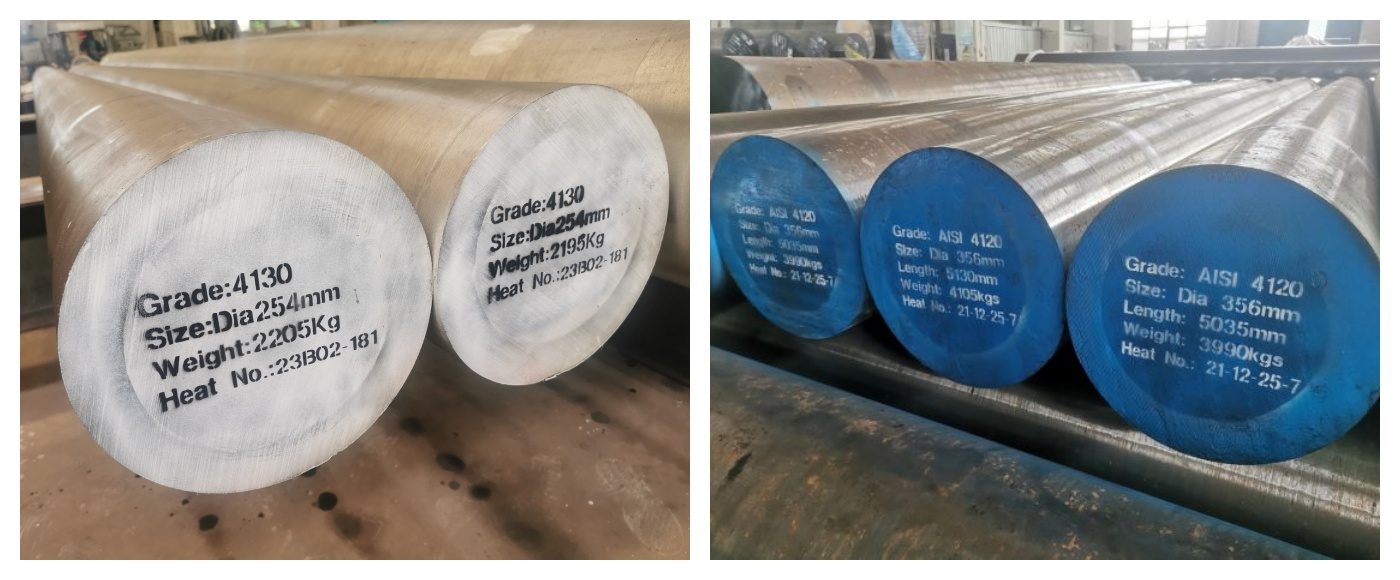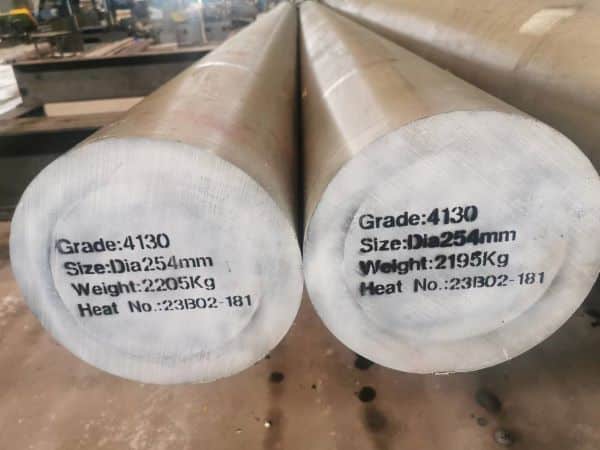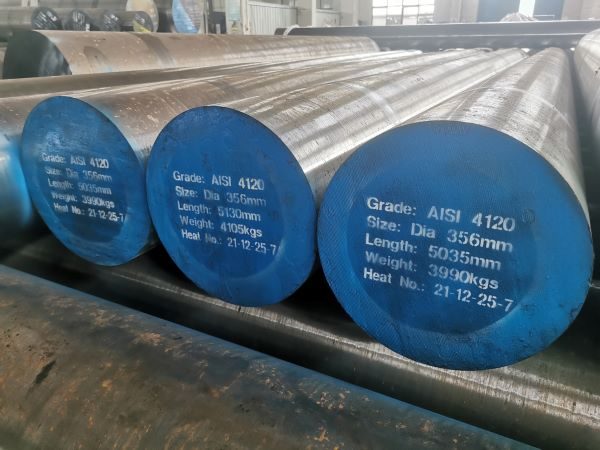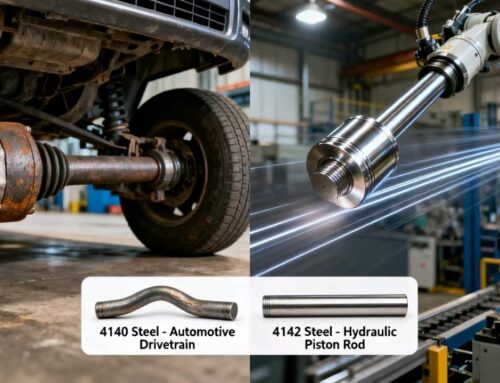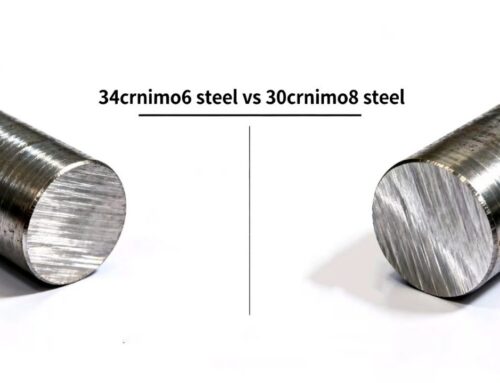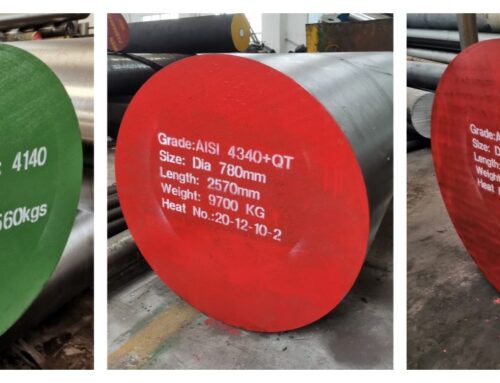Within the chromium-molybdenum low-alloy steel family used in industrial manufacturing, 4130 steel and 4120 steel share the high strength and good toughness inherent in chromium and molybdenum. However, subtle differences in carbon content (4130 steel has a carbon content of 0.28-0.33%, while 4120 steel has a carbon content of 0.18-0.23%) have led to distinct paths in heat treatment processes, mechanical properties, and application scenarios.
From high-pressure pipelines in aerospace to precision gears in the automotive industry, from load-bearing bolts in mechanical manufacturing to downhole tools in the petrochemical industry, the selection of these two steels directly impacts product reliability, cost control, and service life: choosing the right one ensures “performance fit,” while choosing the wrong one can result in excessive strength and wasteful costs, or insufficient wear resistance leading to failure.
This article will start from the differences in chemical composition and analyze the core differences between the two in heat treatment response, mechanical properties, processing and welding characteristics and application scenarios layer by layer, providing a reference basis with both technical depth and practical value for engineering selection.
1. Comparison of Chemical Composition
| Grade | C | Si | Mn | P | S | Cr | Mo |
| 4130 | 0.28-0.33 | 0.15-0.35 | 0.4-0.6 | ≤0.035 | ≤0.04 | 0.8-1.1 | 0.15-0.25 |
| 4120 | 0.18-0.23 | 0.15-0.35 | 0.9-1.2 | ≤0.035 | ≤0.04 | 0.4-0.6 | 0.13-0.20 |
Core Difference 1: Carbon Content(Essential)
- 4130 Steel: Its higher carbon content (0.30%) results in greater strength and hardness, but slightly lower weldability. It is the most widely used chromium-molybdenum steel and is considered a “versatile” structural alloy.
- 4120 Steel: Its lower carbon content (0.20%) results in greater toughness, ductility, and weldability, but its strength and hardness are lower than 4130.
Core Difference 2: Chromium Content
4130 also has a higher chromium content, which contributes to improved hardenability and corrosion resistance.
2. Heat Treatment Process Comparison
- Quenched and Tempered: Quenching temperature 850-880°C (oil cooling), tempering temperature 400-650°C, achieving high strength and good toughness.
- Typical Applications: Used directly after quenching and tempering for structural parts subject to high loads.
- Temper Brittleness: Type I temper brittleness may occur in the 300-350°C range; avoid tempering within this temperature range.
4120 Steel
- Carburizing and Quenching: Carburizing temperature 920-940°C, quenching temperature 810-830°C, tempering temperature 160-200°C. Surface hardness can reach 58-64 HRC, while core toughness remains high.
- Quenched and Tempered: Quenching temperature 870-890°C, tempering temperature 500°C. Suitable for parts with medium strength requirements.
- Typical Applications: After carburizing and quenching, it is used for parts with wear-resistant surface and strong core (such as gears and shafts).
3. Mechanical Properties Comparison
| Performance | 4130 steel (quenched and tempered) | 4120 steel (carburized and quenched) | Difference analysis |
| Tensile strength | 930-1080 MPa | surface hardness: 58-64 HRC; core strength: ≥885 MPa. | 4130 offers higher overall strength, suitable for withstanding high stresses; 4120 offers exceptional surface hardness, suitable for wear-resistant applications. |
| Yield strength | 760-860 MPa | Core yield strength ≥685 MPa | 4130 Higher yield strength provides greater resistance to deformation. |
| Impact toughness | ≥63 J | Core impact energy ≥78 J | Both grades offer good toughness, but 4130 performs better at low temperatures (such as in aviation). |
| Wear resistance | Medium (surface treatment required) | Very high (after carburizing and quenching) | 4120 significantly increases its surface hardness through carburizing, resulting in wear resistance far exceeding that of 4130. |
4. Comparison of Machining and Welding Performance
Machining
- 4130 Steel: Carbide tools are required for cutting, and the cutting temperature should be controlled to avoid changes in hardness.
- 4120 Steel: It has good machinability and is easy to cut in the annealed state. It becomes harder after carburizing, requiring high-performance tools.
Weldability
4130 steel has a carbon equivalent of approximately 0.5 (based on the formula CE = C + Cr/5 + Mo/4). Preheating to 150-200°C is required during welding to prevent cracking, and post-weld stress relief annealing (650°C) is required to prevent cracking. 4120 Steel has a lower carbon equivalent (approximately 0.4), offers better weldability, and requires less stringent preheating.
5. Application Industry Comparison
Industry 4130 Steel Typical Applications 4120 Steel Typical Applications Selection Basis
Aerospace Aircraft landing gear, engine shafts, high-pressure pipelines gears, piston pins, structural parts 4130 offers high strength and low-temperature resistance; 4120 offers wear resistance and lightweight performance after carburizing.
Automotive Industry Crankshafts, connecting rods, drive shafts differential gears, and transmission parts 4130 withstands high stresses; 4120 offers a wear-resistant surface and a tough core.
Mechanical manufacturing high-pressure bolts, control wheels, load-bearing structures bearings, pins, carburized gears 4130 is used for high-strength structures; 4120 is used for wear-resistant transmission components.
Petrochemical industry drill collars, downhole tools, high-pressure pipelines fasteners and flanges for non-strongly corrosive environments 4130 is resistant to high pressure and moderate corrosion; 4120 offers excellent weldability and is suitable for non-extreme environments.
How to choose: 4130 or 4120?
When choosing, follow this decision-making process:
Primary consideration: Strength or weldability?
- Seeking maximum strength/hardness -> Choose 4130.
- Requires extensive or complex welding, and post-weld heat treatment is difficult -> Choose 4120.
- If the component is subject to shock loads or low temperatures, requiring extremely high toughness -> 4120 is a safer choice.
- For general structural parts, the toughness of 4130 is sufficient.
Cost and Machinability
- 4120 is generally easier to machine, reducing tooling costs and machining time.
- The raw material prices of the two are similar, but 4120’s better machinability and weldability may reduce overall manufacturing costs.
Summary
| Properties | Winner | Brief Description |
| Strength/Hardness | 4130 | Higher carbon content results in higher ultimate strength and hardness. |
| Toughness/Ductility | 4120 | Lower carbon and vanadium additions provide improved impact toughness. |
| Weldability | 4120 | Lower carbon equivalent makes welding easier and less crack-susceptible. |
| Machinability | 4120 | Lower hardness in the annealed state, making it easier to machinize. |
| Hardenability | 4130 | Effective heat-treat strengthening of thicker sections. |
In short, 4130 is a “power” player, while 4120 is a “balanced” player. There’s no absolute superiority or inferiority; it’s all about suitability for your specific application. When strength and hardness are paramount, choose 4130; when weldability, toughness, and ease of fabrication are more critical, 4120 is the wise choice.
